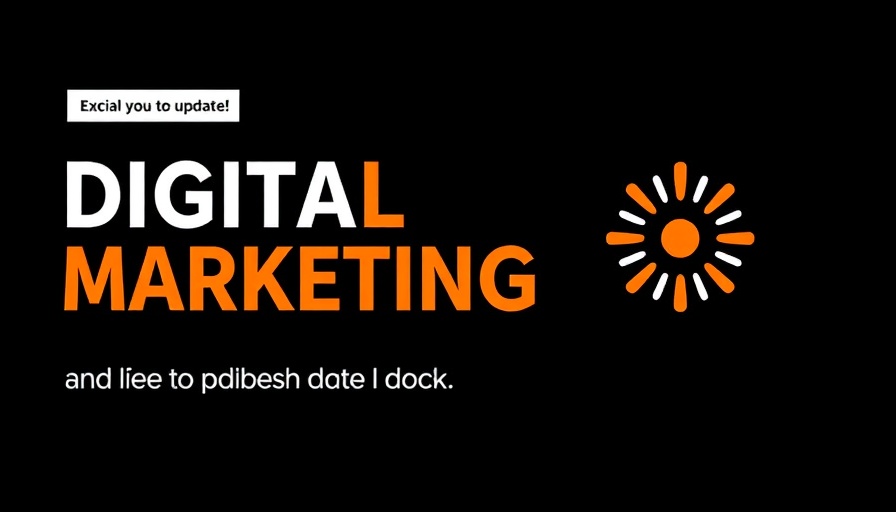
Understanding Google's Revenue Shift: What Does It Mean for Businesses?
In the recent fourth quarter report, Google’s parent company, Alphabet, recorded an impressive $96.5 billion in revenue. This growth represents a 12% increase year-year, but for the first time in two years, the company missed expectations. This has raised important questions for businesses heavily invested in Search Engine Optimization (SEO) and Pay-Per-Click (PPC) marketing strategies. Industry professionals, marketers, and business owners are now scrutinizing what this revenue trend signals for their advertising investments and overall strategies.
Google vs. Competitors: Analyzing Ad Growth
Google's ad revenue reached $72.5 billion, growing by only 10.5% in contrast to its competitor Meta, which boasted a remarkable 21% increase in ad growth. This sharp contrast exemplifies a shifting landscape in digital advertising, where Google still commands a significant share—but the momentum appears to be slowing regarding growth potential. For marketers, this differentiation means it's crucial to analyze and adapt advertising strategies that respond to these fluctuating growth rates.
Investment in AI and Cloud: A New Direction
While revenue growth in advertising has shown signs of slowing, a silver lining exists within Google's investment strategies. Alphabet plans to invest $75 billion in capital expenditures predominantly focused on AI and cloud infrastructure in 2025. This emphasis indicates a pivot toward leveraging artificial intelligence to enhance the digital experience for both businesses and consumers. Marketers should consider how AI-driven tools can transform their SEO and PPC campaigns by enabling more tailored and effective ad placements.
Search and YouTube: The Cornerstones of Google Advertising
Despite mixed results in overall growth, Google's strength in Search and YouTube remains undeniable. YouTube ad revenues, for instance, have increased by 14%, making it a critical platform for advertisers looking to tap into a vast audience. Marketers should focus on video content creation and optimization, harnessing the power of both platforms to drive brand engagement and visibility.
The Future of Paid Advertising: Adapt or Fall Behind
The slow down in ad growth could indicate a more saturated market. Marketers must pivot by adapting their strategies, focusing on innovative ad methods like Performance Max campaigns that leverage AI. Thus, it becomes increasingly important to stay informed about emerging trends and tools that can enhance campaign effectiveness and ROI.
Understanding Site Traffic and Competitor Dynamics
Interestingly, Google attracted 16.5 billion visits to its platforms in December 2024, dwarfing competitors like ChatGPT. This draws attention to Google's continued dominance in driving traffic. Despite increased competition, Google retained its position as the source for over 90% of worldwide referral traffic, underscoring the relevance of implementing effective SEO strategies in a landscape peppered with alternatives.
Marketer's Perspective: How to Adjust Strategies
Professionals in digital marketing should heed the signs coming from Google’s recent performance. It’s essential to continuously monitor how shifting trends might affect their own PPC and SEO approaches. Exploring new avenues like AI-driven advertising and enhanced video content on platforms like YouTube can yield significant benefits in attracting and converting potential customers.
Conclusion: Stay Ahead in a Changing Digital Landscape
To thrive in the ever-evolving world of digital marketing, businesses must adopt a proactive approach to their advertising strategies. By understanding the implications of Google's latest performance metrics and investing in innovative solutions, marketers can better position themselves for future success.
 Add Row
Add Row  Add
Add 




 Add Row
Add Row  Add
Add
Write A Comment